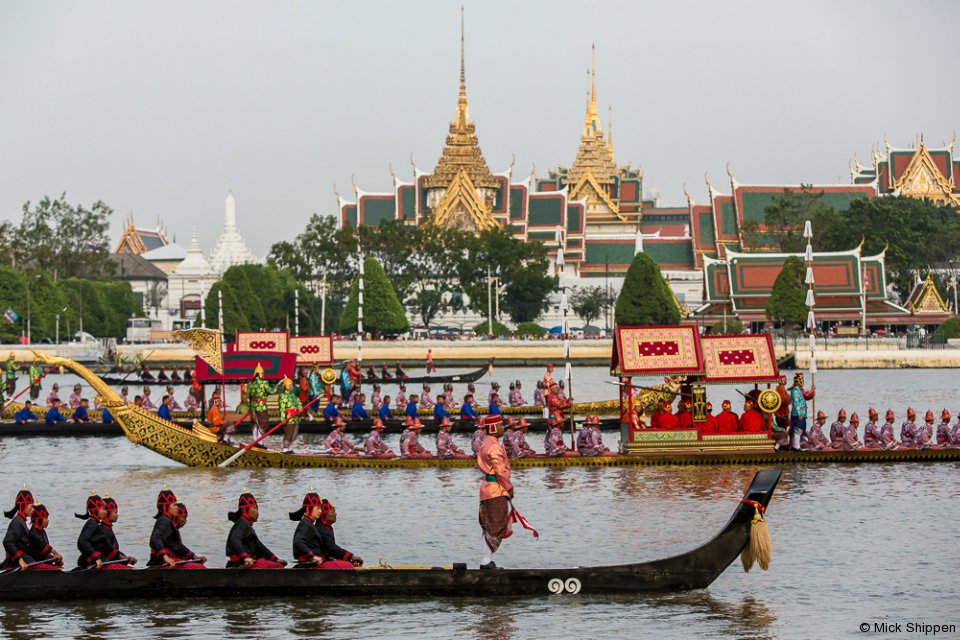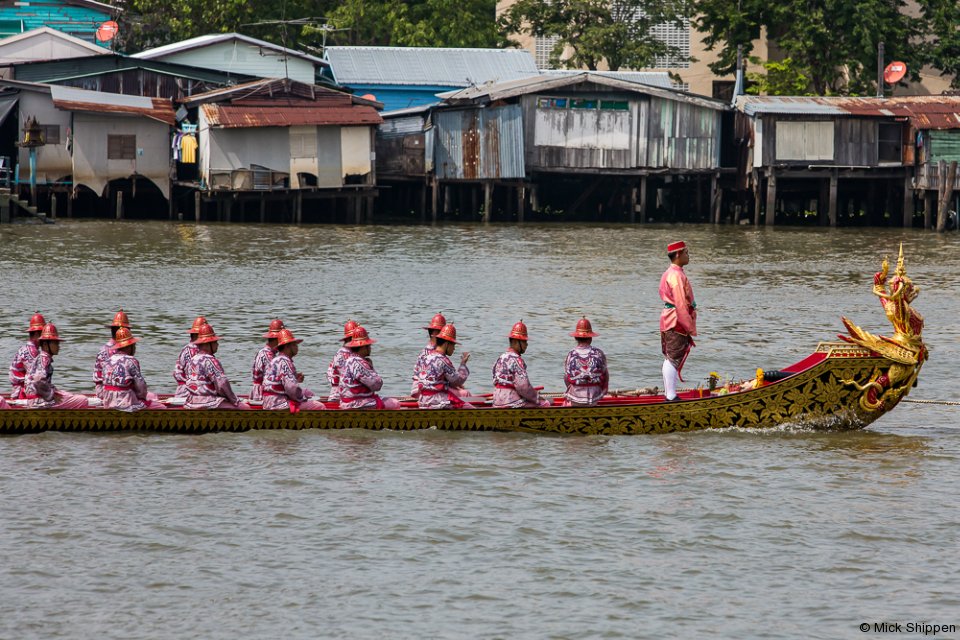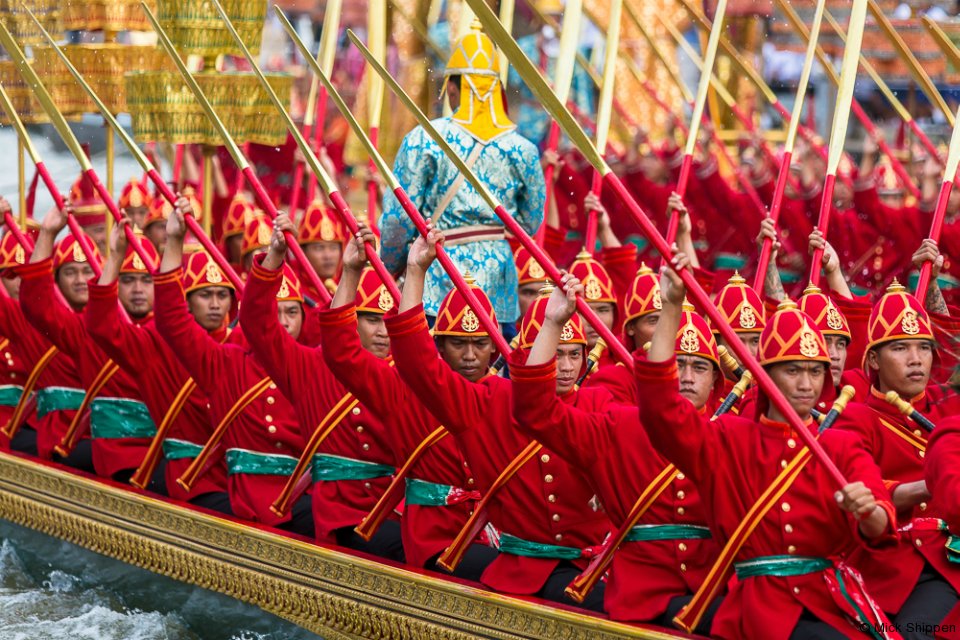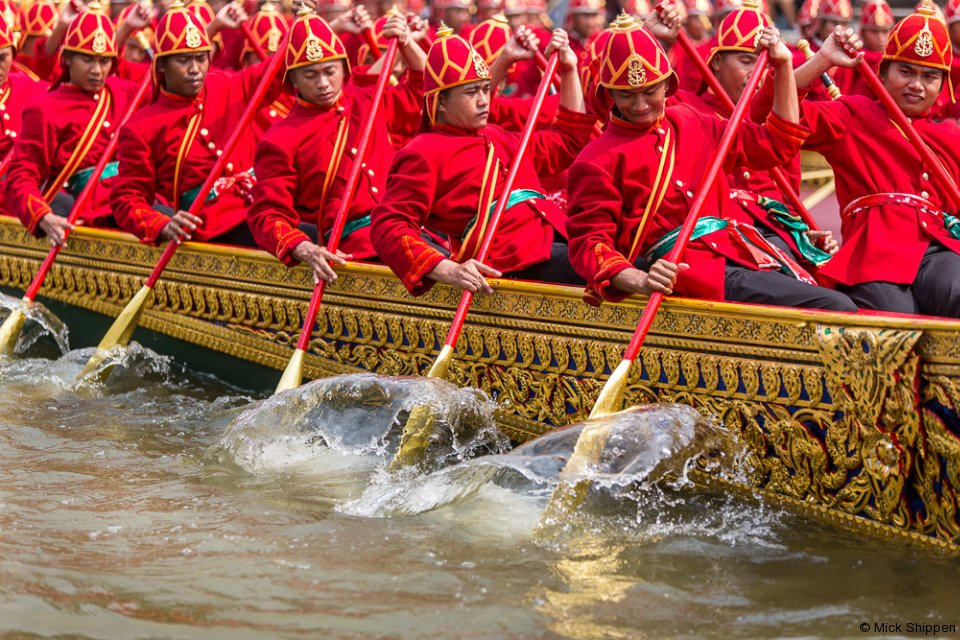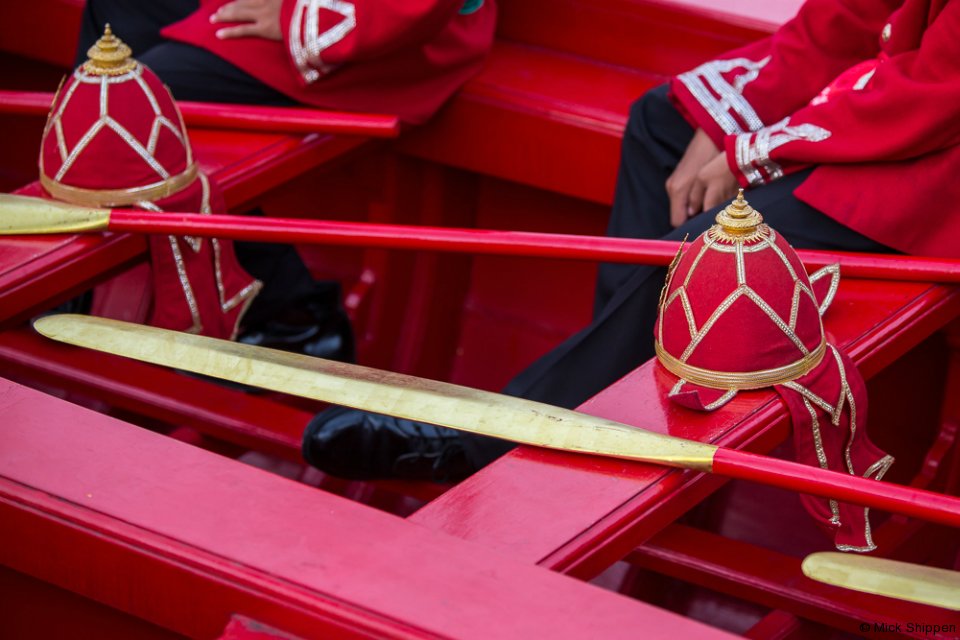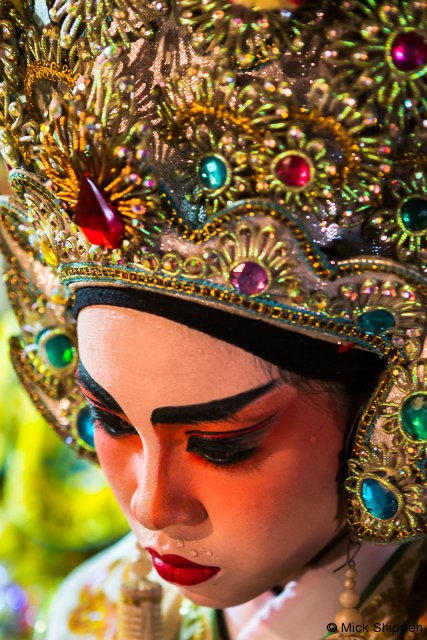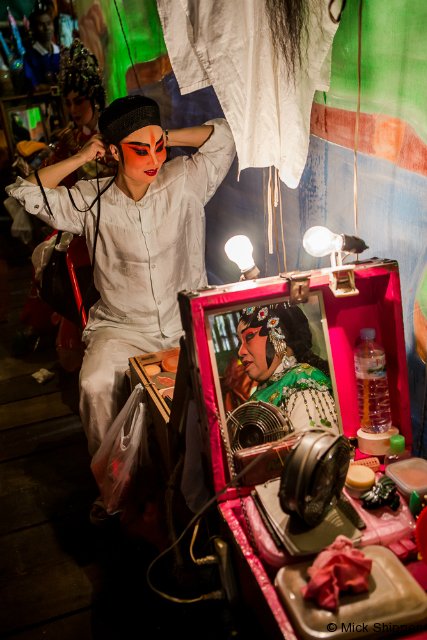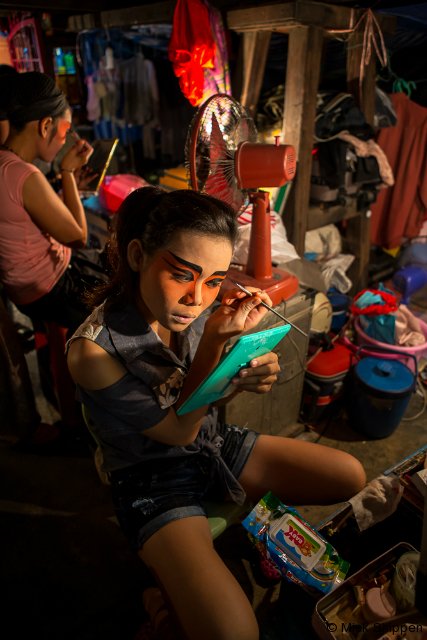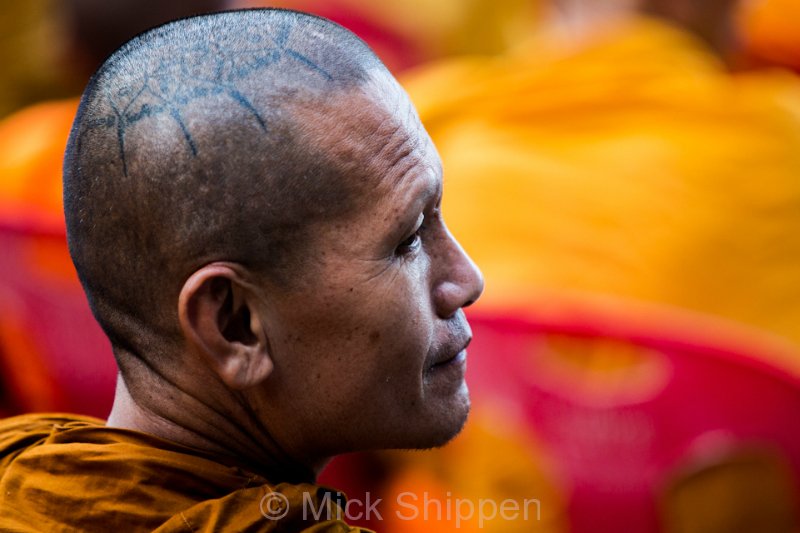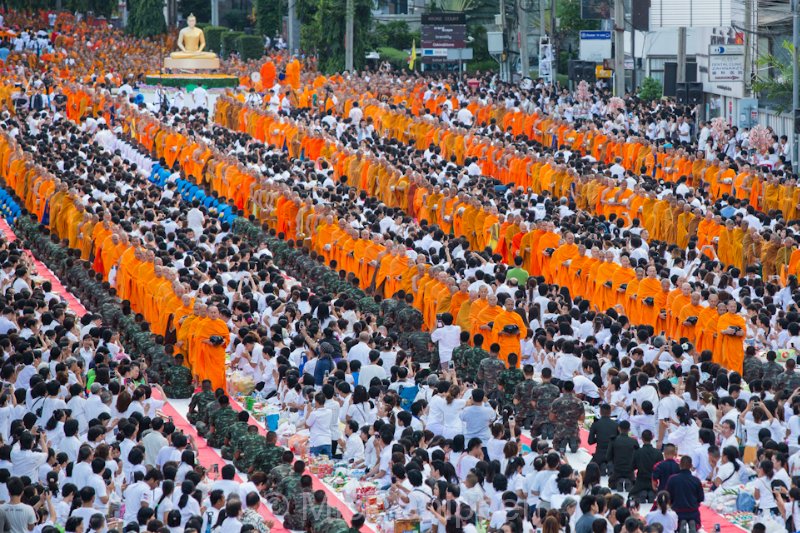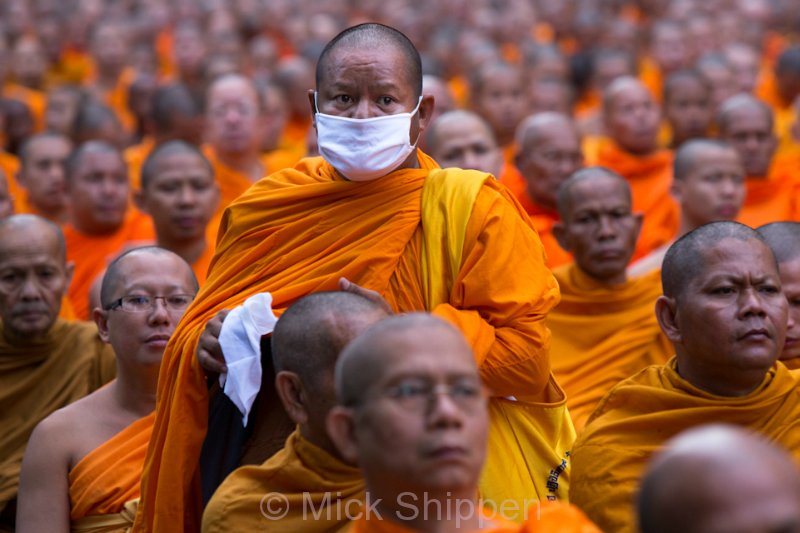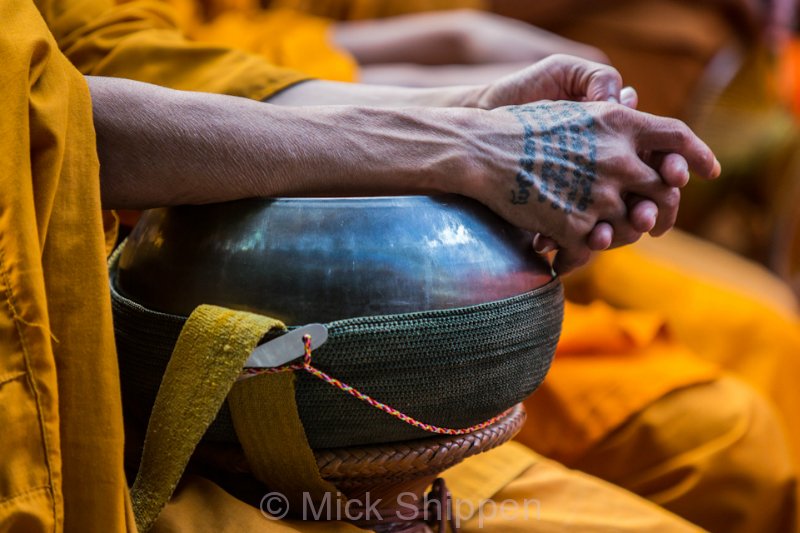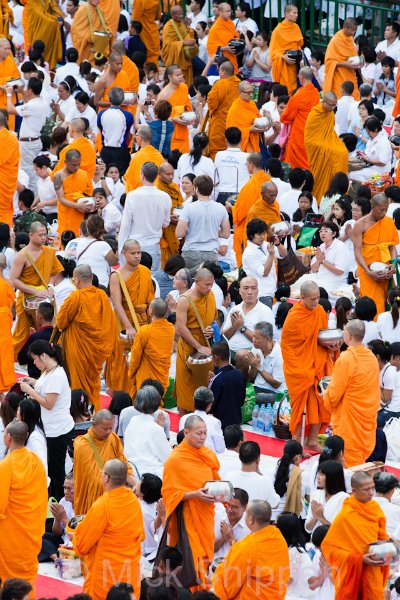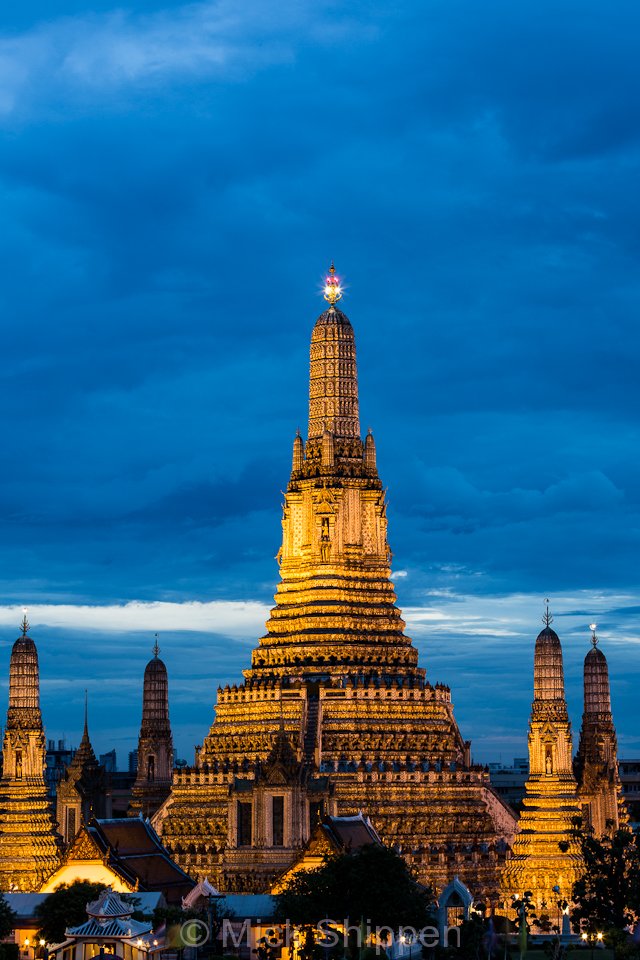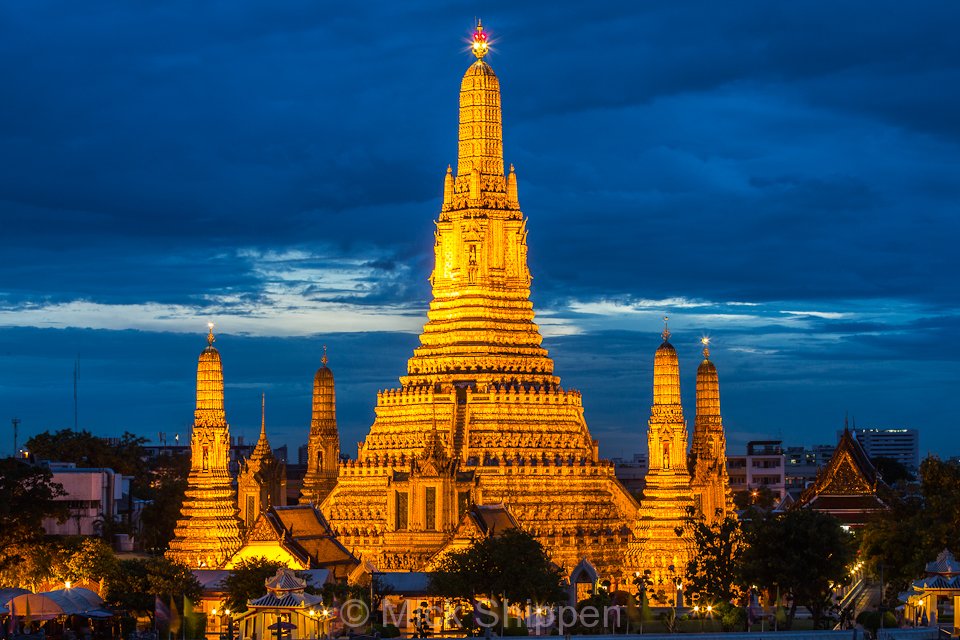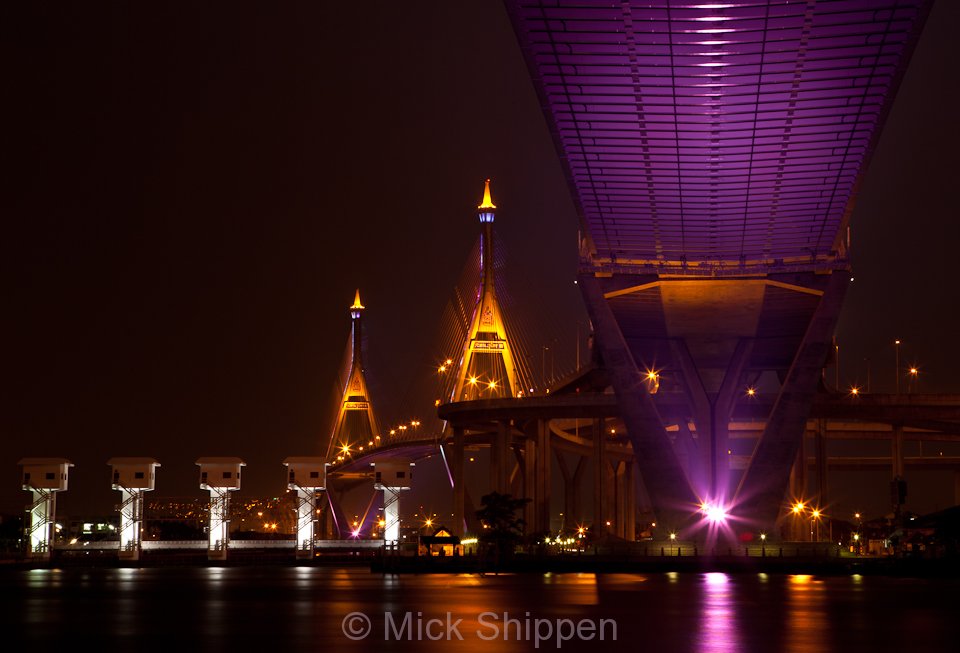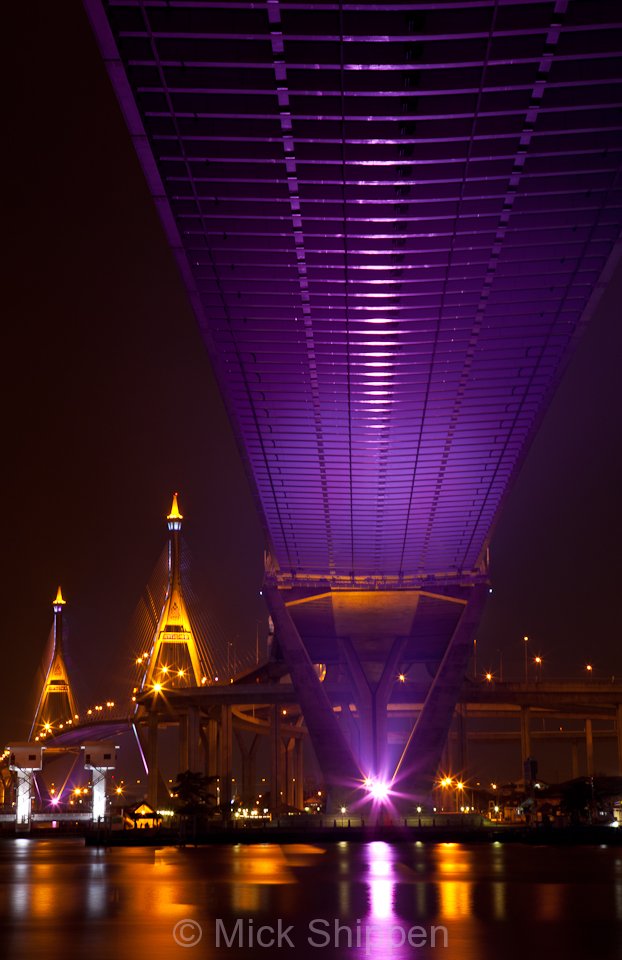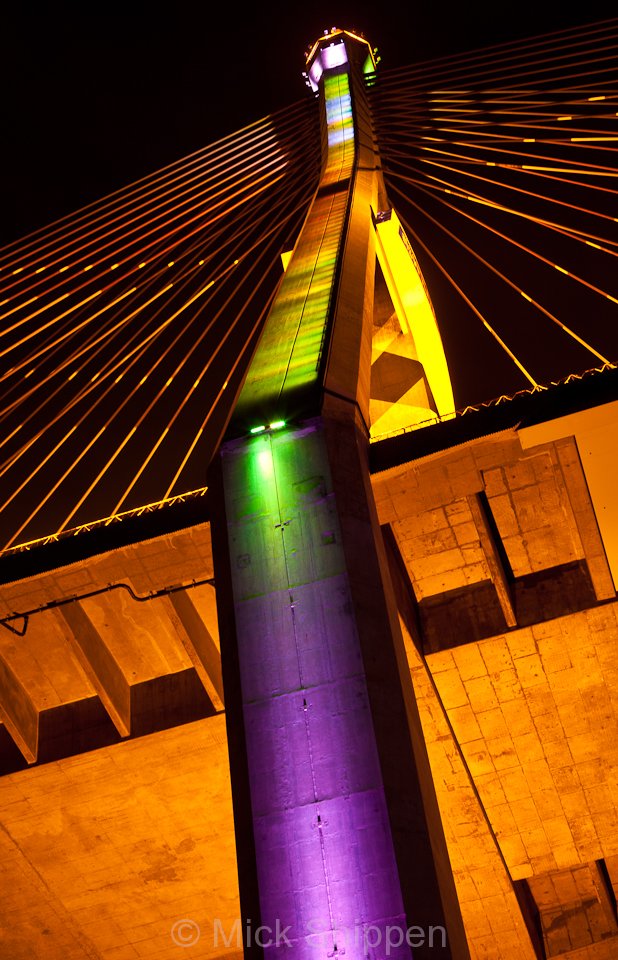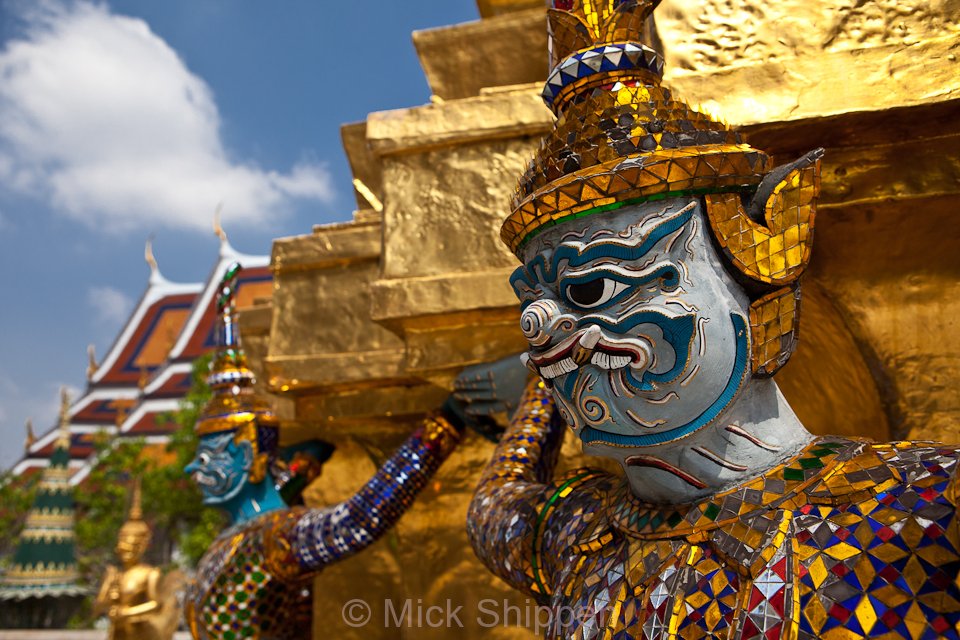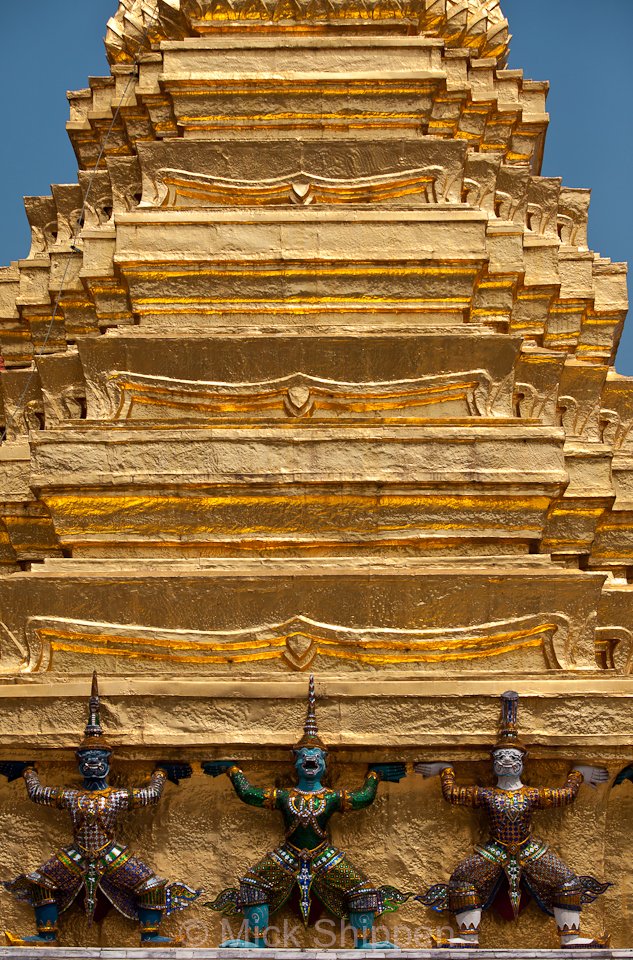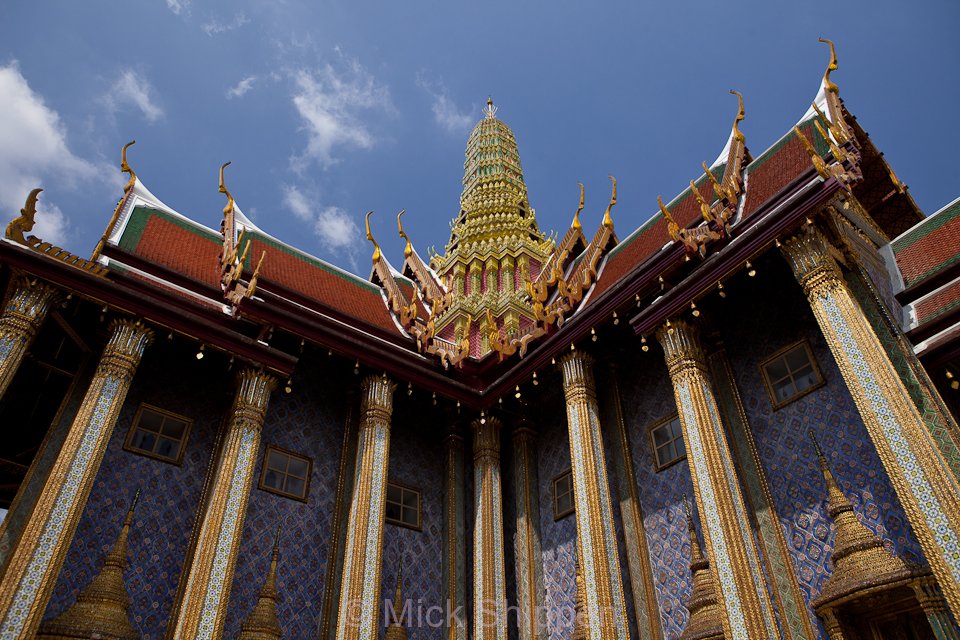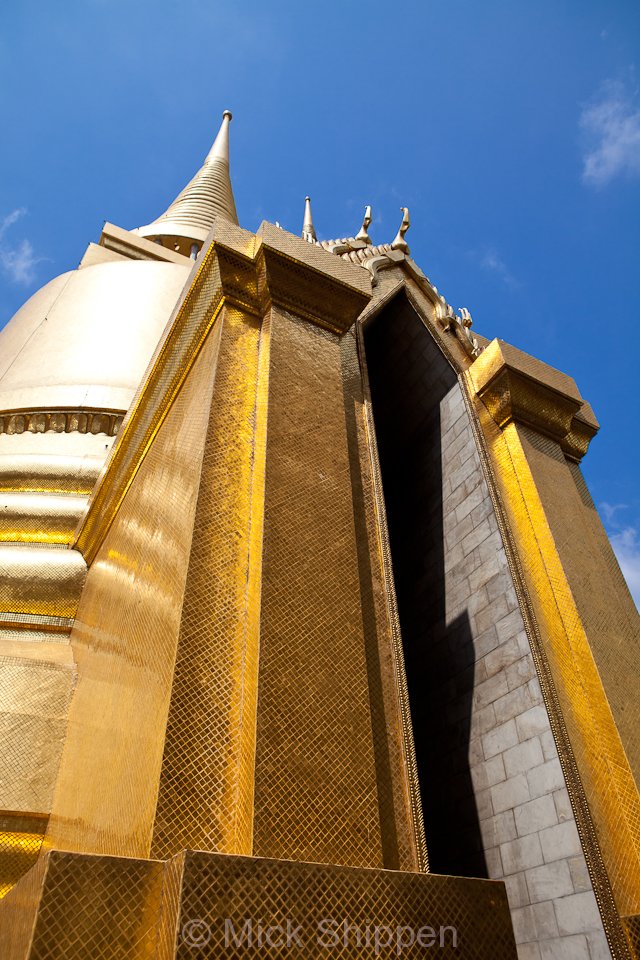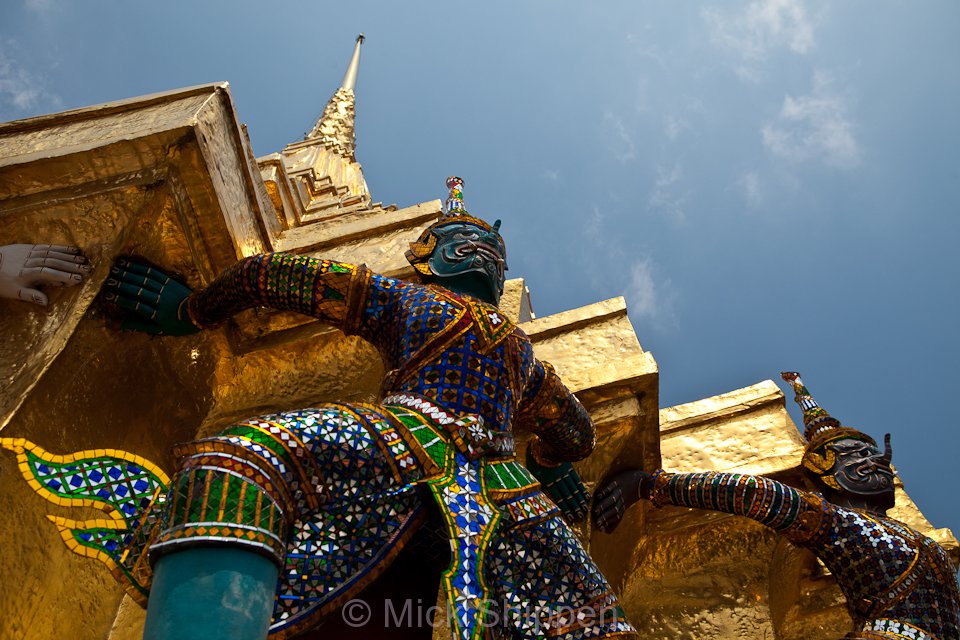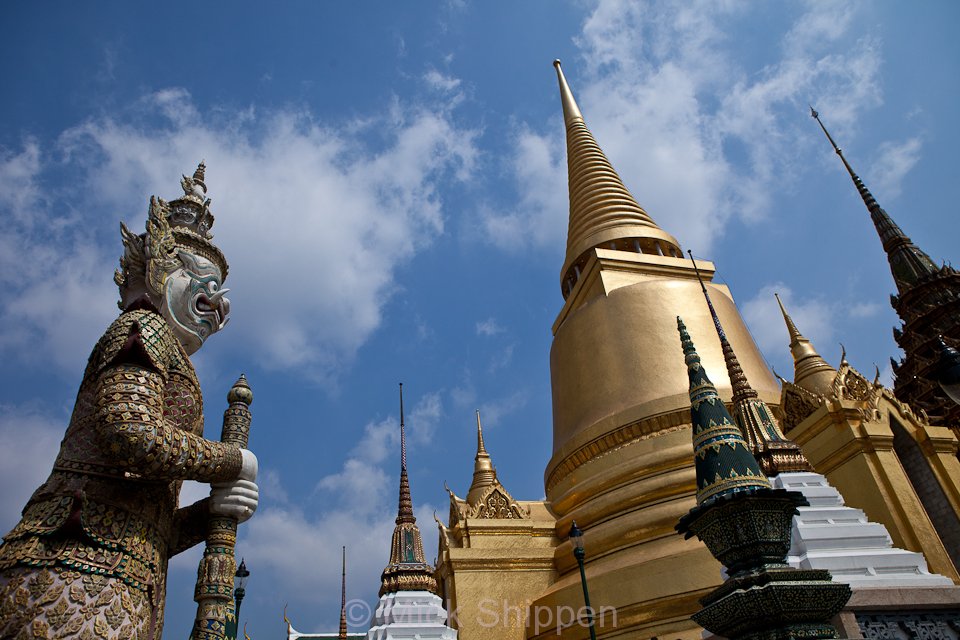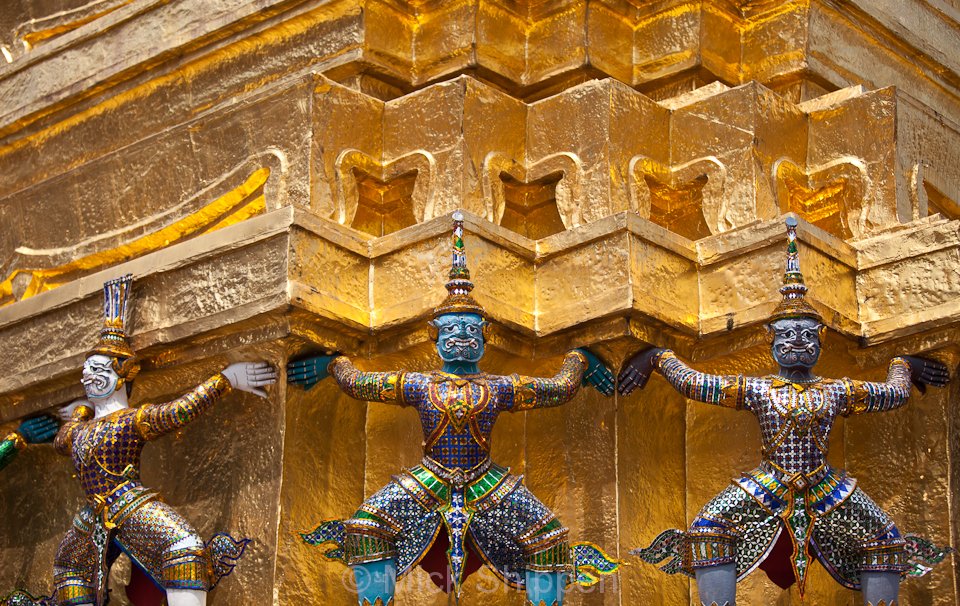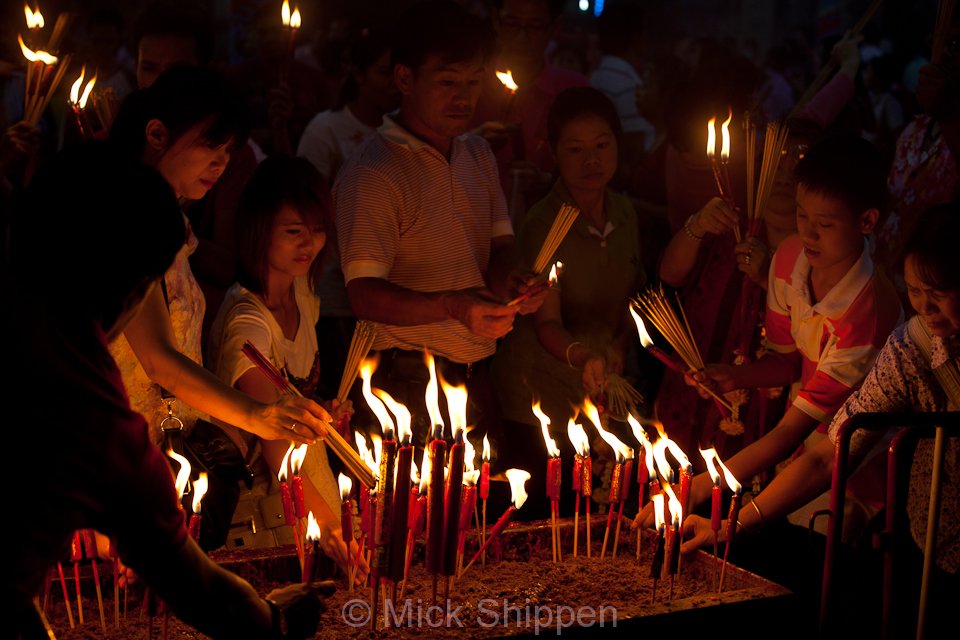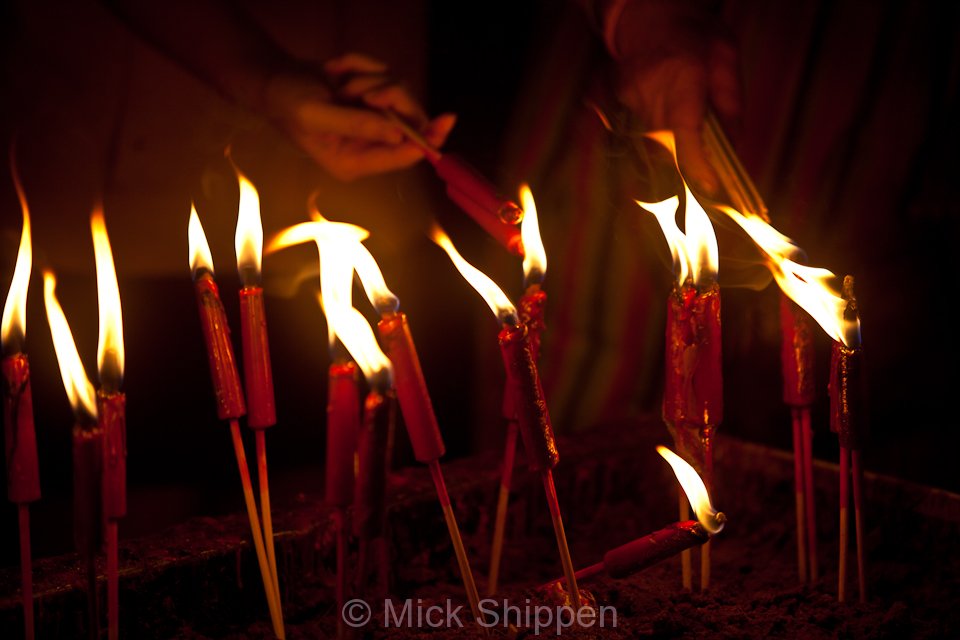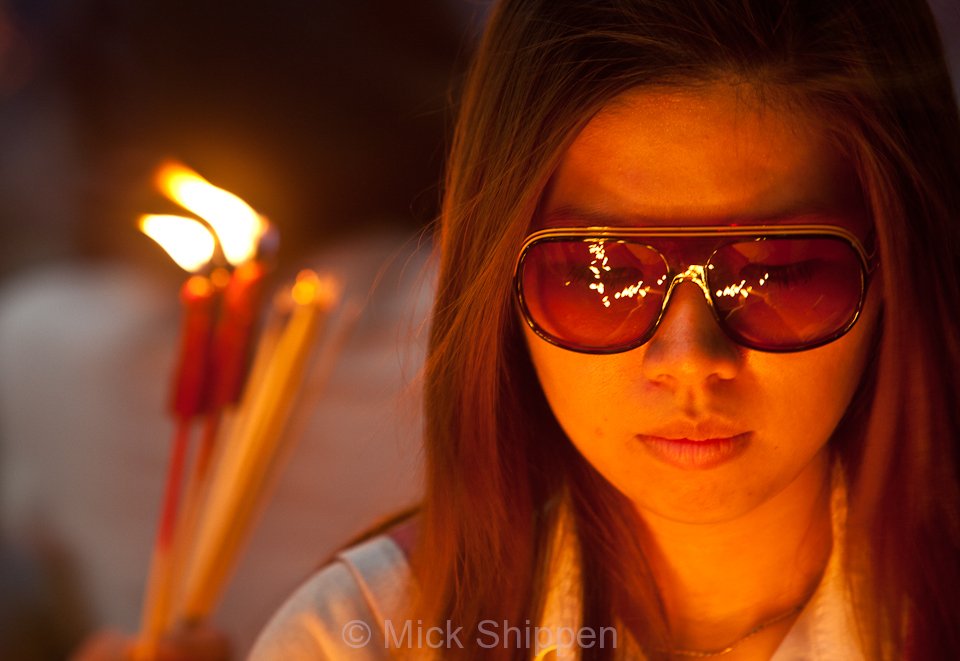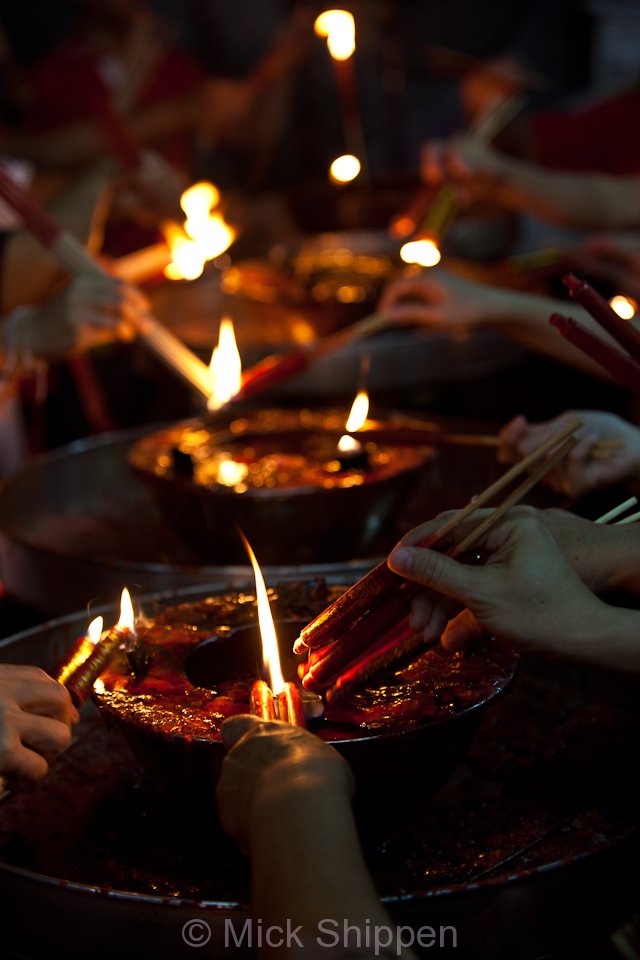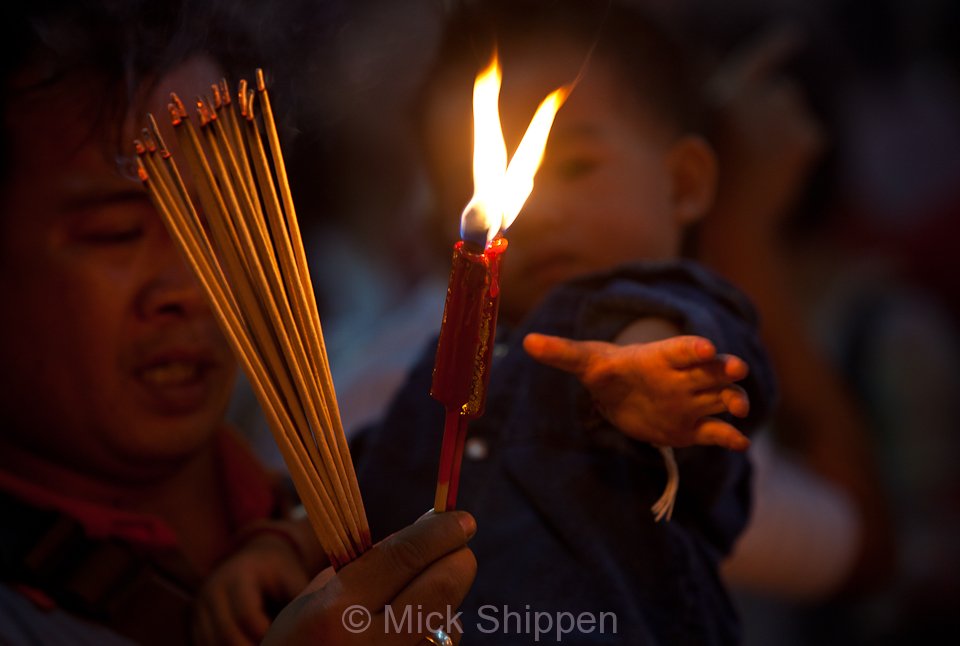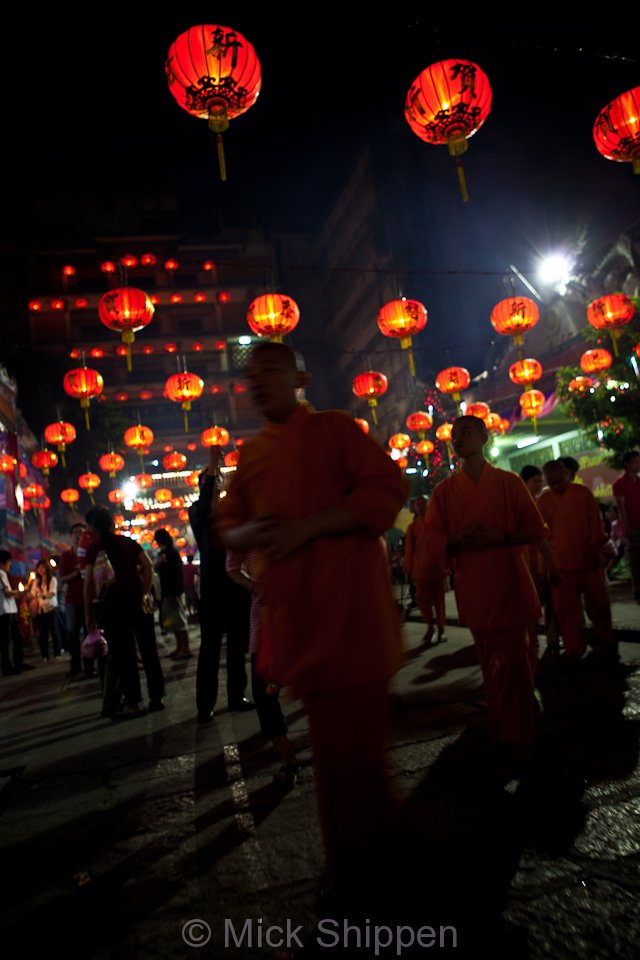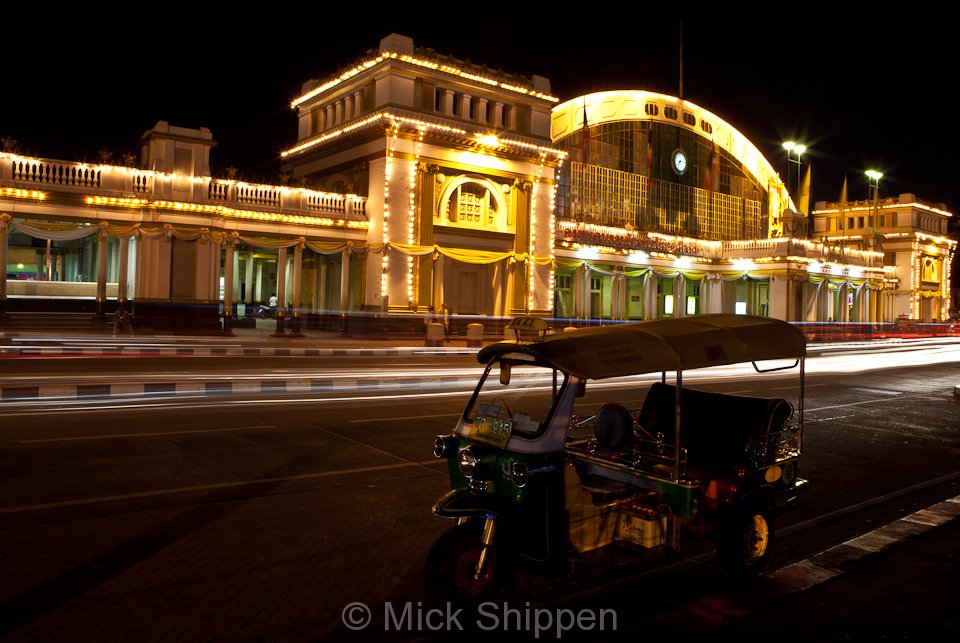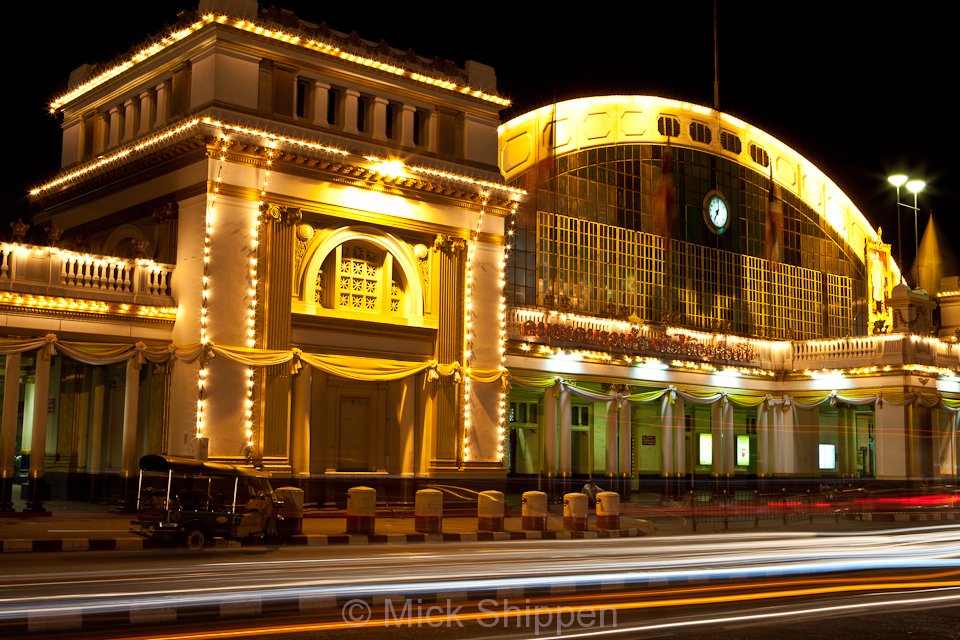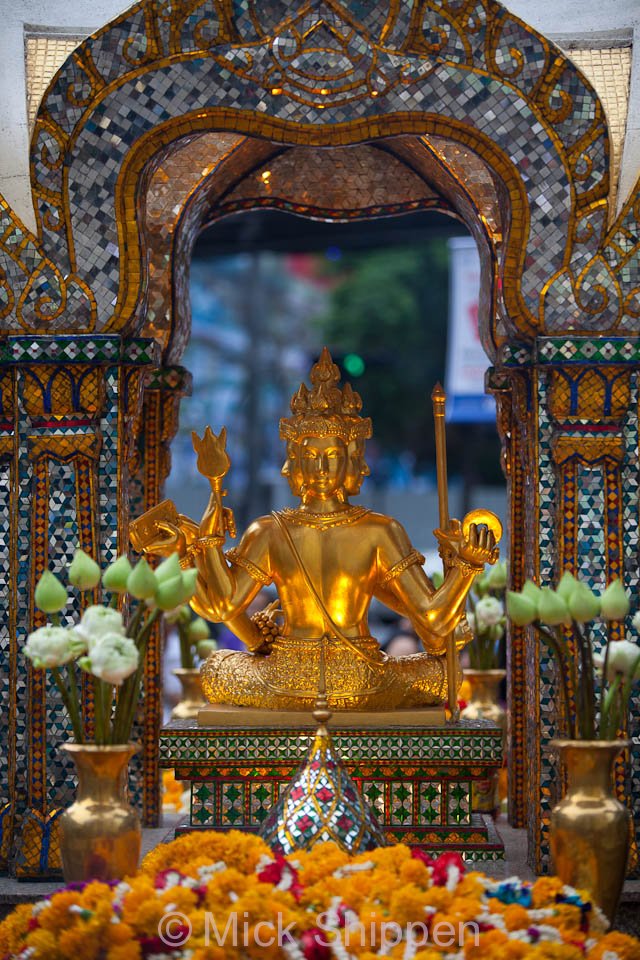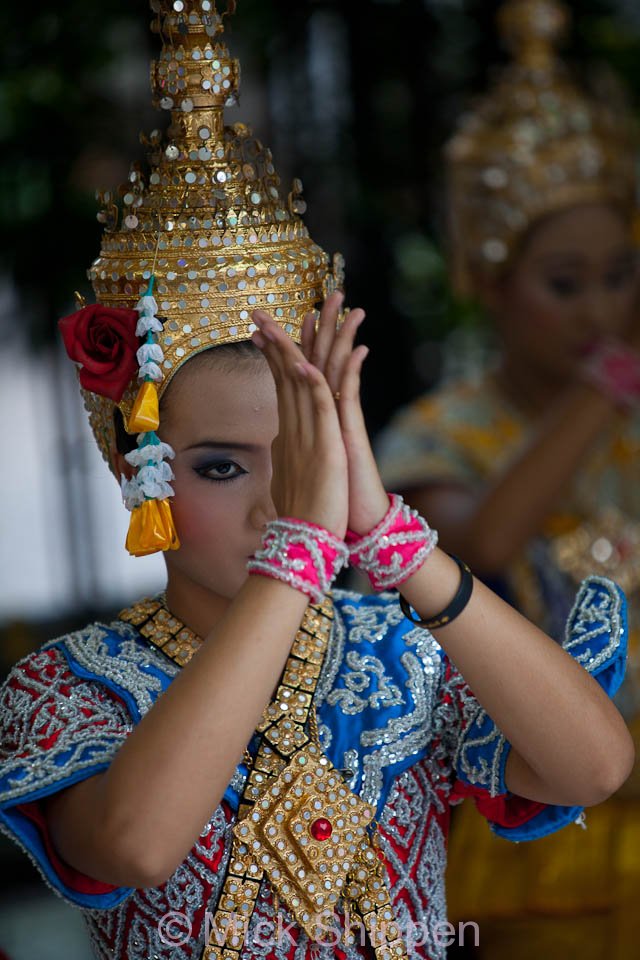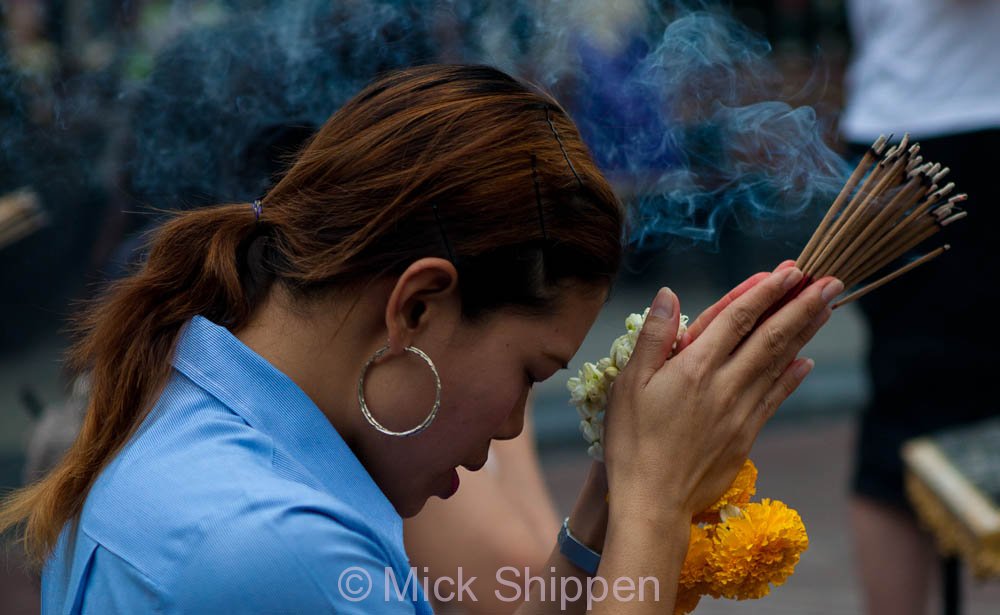Brothers in Alms
I’m usually pretty good at getting up early. It’s part of the job description for photographers. But this Sunday was a struggle, thanks to a little over-indulgence with friends the night before.

I almost persuaded myself to stay in bed rather than get up at 5 am and head to Rajprasong in central Bangkok for the last of three annual mass almsgiving ceremonies.

I’ve been to a couple of these in the past so it wasn’t essential for me to go again but I’m glad I made the effort because there’s some great photo-opportunities to be had.

The almsgiving is organized in most part by the Dhammakaya which is located at a huge temple on the outskirts of Bangkok. This controversial foundation is skilled at staging high profile and visually dramatic events, and is popular with a certain segment of the Thai middle class.

On Sunday, as part of Buddhist Lent, the almsgiving was held to honour the Triple Gem, namely Buddha, Dharma and Sangha or the Lord Buddha, his teachings and the Buddhist community.

At 5.30 a.m., ten thousand saffron-robed monks who had been bussed in for the occasion gathered in downtown Bangkok for a prayer ceremony. This was followed by the almsgiving by an equally large number of followers, all dressed in white.

The offerings, mainly dried instant noodles, rice, UHT drinks and coffee powder will be distributed by the army to temples in the troubled southern provinces where daily violence by militant Muslims has made it difficult for monks to go out to receive alms.

Despite the large turnout at the event, it must be said that a lot of Thai Buddhists don’t like these large-scale gatherings because of the involvement of Dhammakaya, an organization that is viewed by many as placing too much emphasis on financial contributions.

The entire event is extremely well organised and runs like clockwork. Plastic sheeting laid out on the road in front of Gaysorn Plaza and Central World have clearly defined areas for worshippers to sit and monks to walk.

After prayers, the monks proceed down the walkway and are presented with offerings. Once the bowls are full, young soldiers empty the the contents into plastic sacks so more offerings can be made.

Those who can’t find a place to sit simply stand at the side of the road and pray.

The majority of those taking part in the ceremony wear white clothing.


Many novice monks take part in the event.

Individual donations are small but plentiful and truckloads of items are collected to be sent down south.

There’s no shortage of colourful characters.

Once the ceremony is over, the monks gather in groups and head back to their buses. The road is then quickly cleared and Bangkok’s notorious traffic returns.



